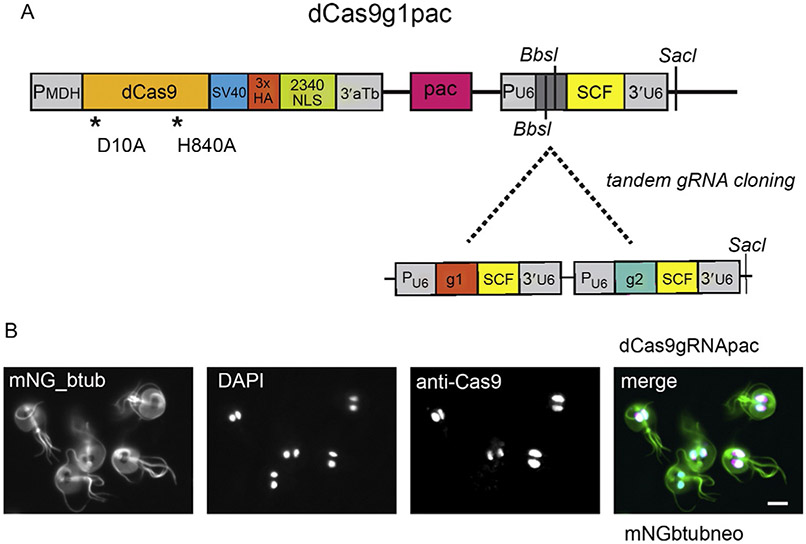Fig. 2.
The Giardia CRISPRi plasmid includes a Giardia-specific nuclear localization signal (NLS) to localize dCas9 to both nuclei. The schematic of the Giardia CRISPRi vector dCas9g1pac indicates the catalytically inactive dCas9 with a C-terminal Giardia-specific 2340NLS and a 3XHA epitope tag (A). dCas9 expression is driven by the Giardia malate dehydrogenase promoter (PMDH), and a puromycin resistance marker (pac) allows positive selection in Giardia. The dCas9g1pac plasmid also includes inverted BbsI restriction sites for cloning of specific gRNA target sequences (g1 or g2) upstream of the gRNA scaffold sequence (SCF). The Giardia U6 spliceosomal RNA pol III promoter is used to express the gRNA cassette (g1+SCF); a non-specific gRNA is expressed unless the sequence between the BbsI sites is replaced with annealed oligomers targeting a specific genomic region. The SacI site can be used to add additional gRNA cassettes in tandem. Anti-Cas9 immunostaining of a Giardia strain carrying dCas9g1pac shows that a Giardia-specific native 34-amino acid C-terminal NLS from the Giardia protein GL50803_2340 (2340NLS) is necessary for the localization of 2340GFP to both nuclei (B). Over 50% of cells express dCas9 in both nuclei. In this strain, the microtubule cytoskeleton is visualized by expression of an integrated N-terminal mNeonGreen-tagged beta-tubulin gene selected with neomycin (mNGbtubneo). Scale bars = 5 μm.

